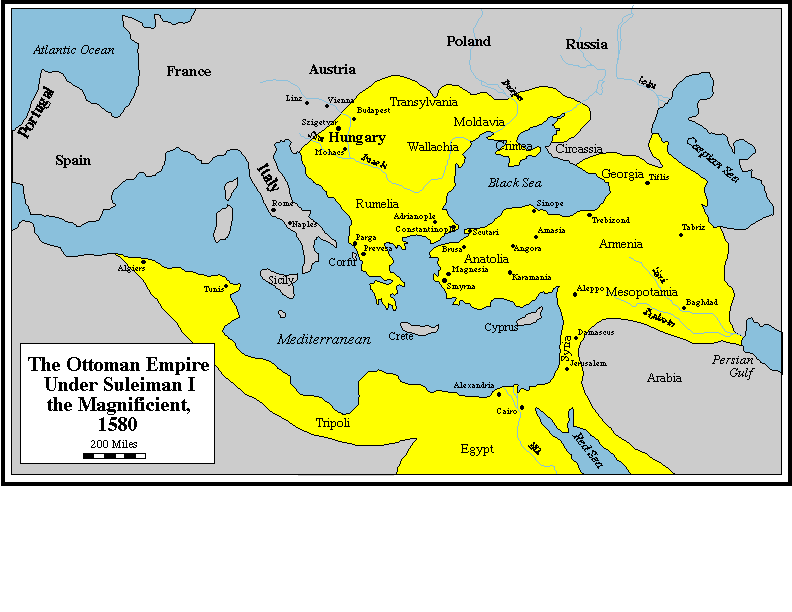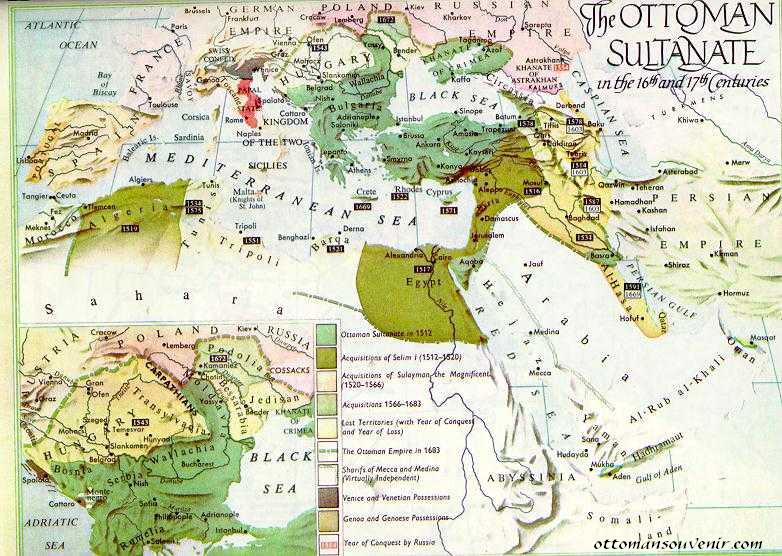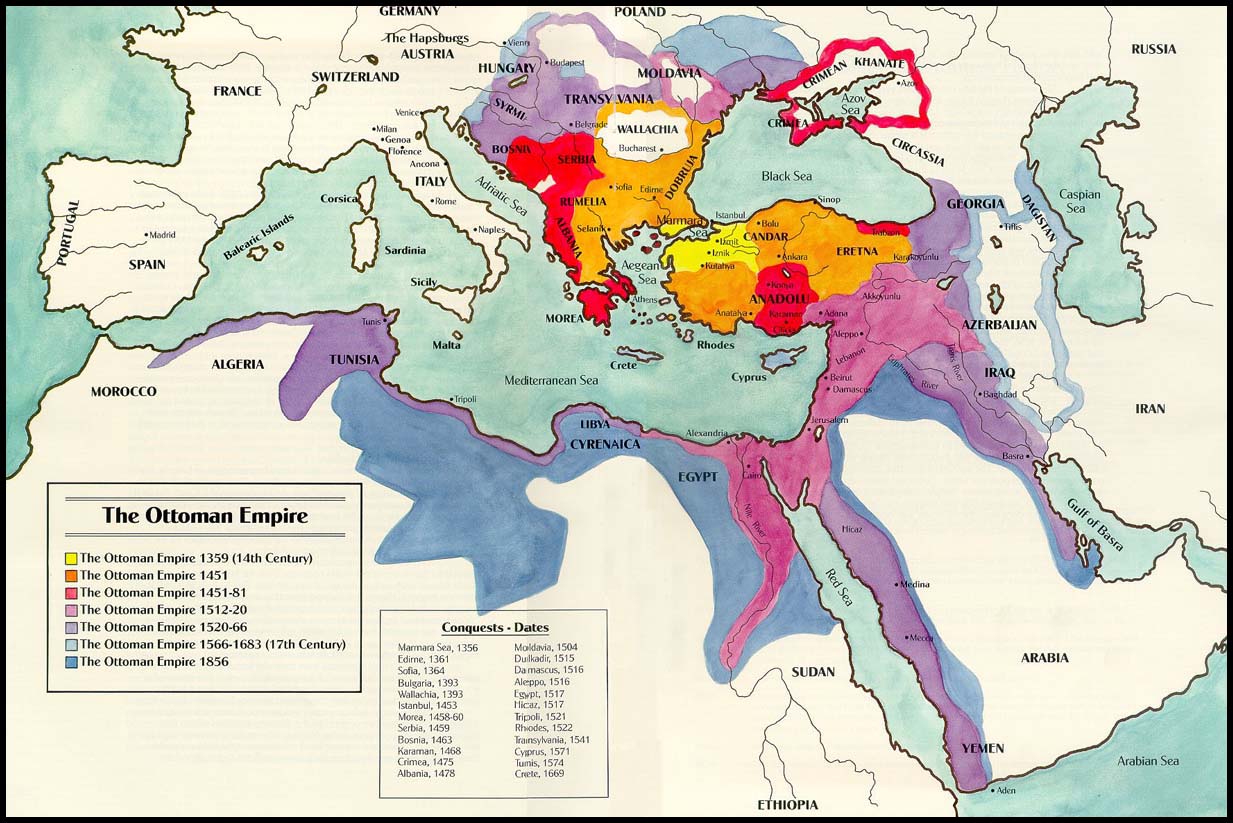The Turkic Saljuqs had established a state in central and southern Anatolia, centered on Konya, after defeating the Byzantines at the battle of Manzikert in 1071. This state was then destroyed by the Mongols in 1242-1243, which paradoxically led the way for even more Turks to enter Anatolia.
Small groups of warriors, nomads, refugees, adventurers, bandits and what-have-you, escaping from the Mongols' oppressive rule, population pressures and lured by potential for booty, pasturage and glory, made their way into Anatolia. There, they resumed the war against Byzantium and founded principalities. One of these frontier states was that which was led by Ertugrul.
Ertugrul passed away around 1280 and was succeeded by Osman, founder of the Ottoman royal house. He expanded his domains onto the surrounding plains, and his son, Orhan, captured the important town of Bursa in 1326. Orhan later led the way across the straits to Gallipoli in 1345. He invited masses of Turkish warriors to settle in the Balkans, and swiftly conquered northern Greece, Macedonia and Bulgaria.
The Ottomans consolidated their hold of the western Balkans, after decisively defeating the Serbs at the battle of Kosovo in 1389. Having secured their European territories, they made their moves in Anatolia, annexing rival Turkish principalities, and began eyeing the great city of the Byzantines, Constantinople.
However, things were not to be. In 1402, the great conquerer, Timur, invaded the Ottoman lands, defeated Bayazid I in battle and reduced the Ottomans to vasslage. The Ottomans survived this major setback however, and continued on their quest to subdue the rest of the Anatolian principalities and also expanded their reach into Serbia, pushing the Serbs to the Danube by 1449.
Europe was alarmed by the rapid Ottoman successes. Crusades were launched. One, launched in 1396 and organized by the papacy and Venice, was crushed at the battle of Nicopolis. In 1444, another, of the papacy and including the kings of Poland, Hungary, Naples and the rulers of Transylvania, Serbia, Venice and Genoa, was crushed at the battle of Varna. The Ottomans were unstoppable.
Then in 1453, the Ottomans, led by Mehmed II The Conqueror and aided by Western cannons, reduced the walls of Constantinople and took the city of the Byzantines. Now, Ottoman ambitions knew no bounds.
By 1500, Greece, Bosnia, Herzegovina and Albania had been occupied on the European mainland. In the east, the Ottomans also continued on their sweep across the rest of Anatolia and subjugating remaining Turkish principalities. They ran into the Safavids, who were expanding westwards out of Persia. At the decisive battle of Chaldiran in 1514, the Ottomans won a victory and annexed eastern Anatolia and northern Mesopotamia.
The struggle with Iran would continue for more than a century until the treaty of Qasr Shirin which gave Baghdad and Iraq to the Ottomans and the Caucasus to the Safavids, basically the modern Iran-Iraq border today. Elsewhere, in 1516-1517, the Ottomans would also take over the Mamluk empire of Syria and Egypt and the Muslim holy places of Arabia.
Thus, the Ottomans, secured in their powerbase, began their epic centuries-long struggle with the nations of Europe, Russia, Iran, and the Portuguese in the Indian Ocean.
Small groups of warriors, nomads, refugees, adventurers, bandits and what-have-you, escaping from the Mongols' oppressive rule, population pressures and lured by potential for booty, pasturage and glory, made their way into Anatolia. There, they resumed the war against Byzantium and founded principalities. One of these frontier states was that which was led by Ertugrul.
Ertugrul passed away around 1280 and was succeeded by Osman, founder of the Ottoman royal house. He expanded his domains onto the surrounding plains, and his son, Orhan, captured the important town of Bursa in 1326. Orhan later led the way across the straits to Gallipoli in 1345. He invited masses of Turkish warriors to settle in the Balkans, and swiftly conquered northern Greece, Macedonia and Bulgaria.
The Ottomans consolidated their hold of the western Balkans, after decisively defeating the Serbs at the battle of Kosovo in 1389. Having secured their European territories, they made their moves in Anatolia, annexing rival Turkish principalities, and began eyeing the great city of the Byzantines, Constantinople.
However, things were not to be. In 1402, the great conquerer, Timur, invaded the Ottoman lands, defeated Bayazid I in battle and reduced the Ottomans to vasslage. The Ottomans survived this major setback however, and continued on their quest to subdue the rest of the Anatolian principalities and also expanded their reach into Serbia, pushing the Serbs to the Danube by 1449.
Europe was alarmed by the rapid Ottoman successes. Crusades were launched. One, launched in 1396 and organized by the papacy and Venice, was crushed at the battle of Nicopolis. In 1444, another, of the papacy and including the kings of Poland, Hungary, Naples and the rulers of Transylvania, Serbia, Venice and Genoa, was crushed at the battle of Varna. The Ottomans were unstoppable.
Then in 1453, the Ottomans, led by Mehmed II The Conqueror and aided by Western cannons, reduced the walls of Constantinople and took the city of the Byzantines. Now, Ottoman ambitions knew no bounds.
By 1500, Greece, Bosnia, Herzegovina and Albania had been occupied on the European mainland. In the east, the Ottomans also continued on their sweep across the rest of Anatolia and subjugating remaining Turkish principalities. They ran into the Safavids, who were expanding westwards out of Persia. At the decisive battle of Chaldiran in 1514, the Ottomans won a victory and annexed eastern Anatolia and northern Mesopotamia.
The struggle with Iran would continue for more than a century until the treaty of Qasr Shirin which gave Baghdad and Iraq to the Ottomans and the Caucasus to the Safavids, basically the modern Iran-Iraq border today. Elsewhere, in 1516-1517, the Ottomans would also take over the Mamluk empire of Syria and Egypt and the Muslim holy places of Arabia.
Thus, the Ottomans, secured in their powerbase, began their epic centuries-long struggle with the nations of Europe, Russia, Iran, and the Portuguese in the Indian Ocean.









